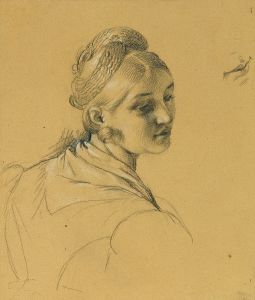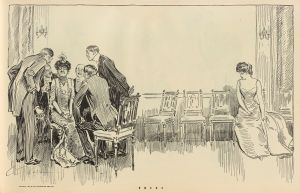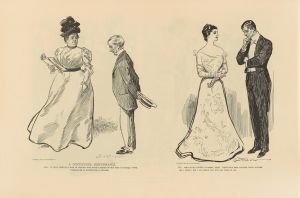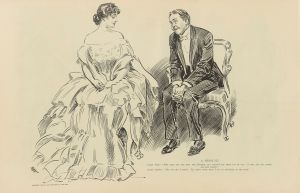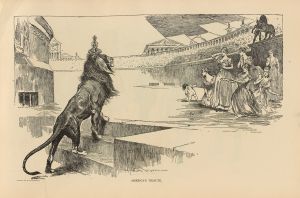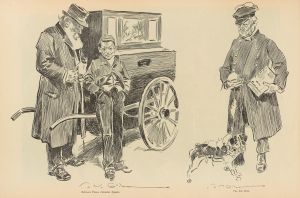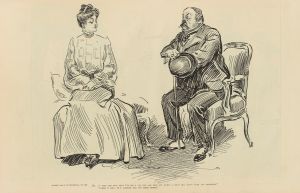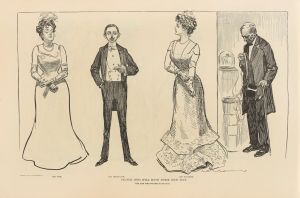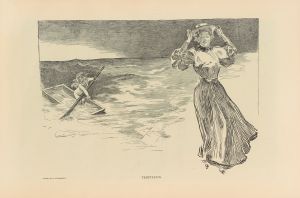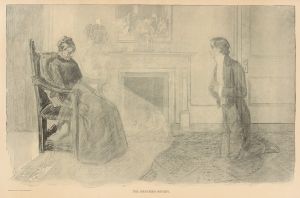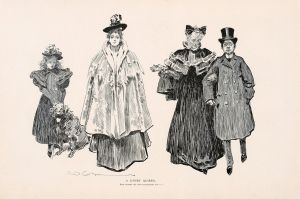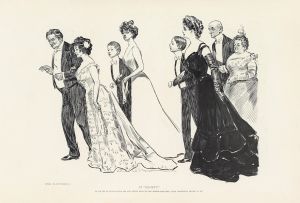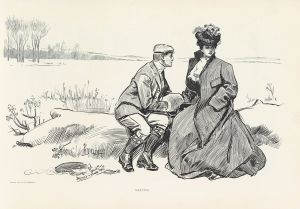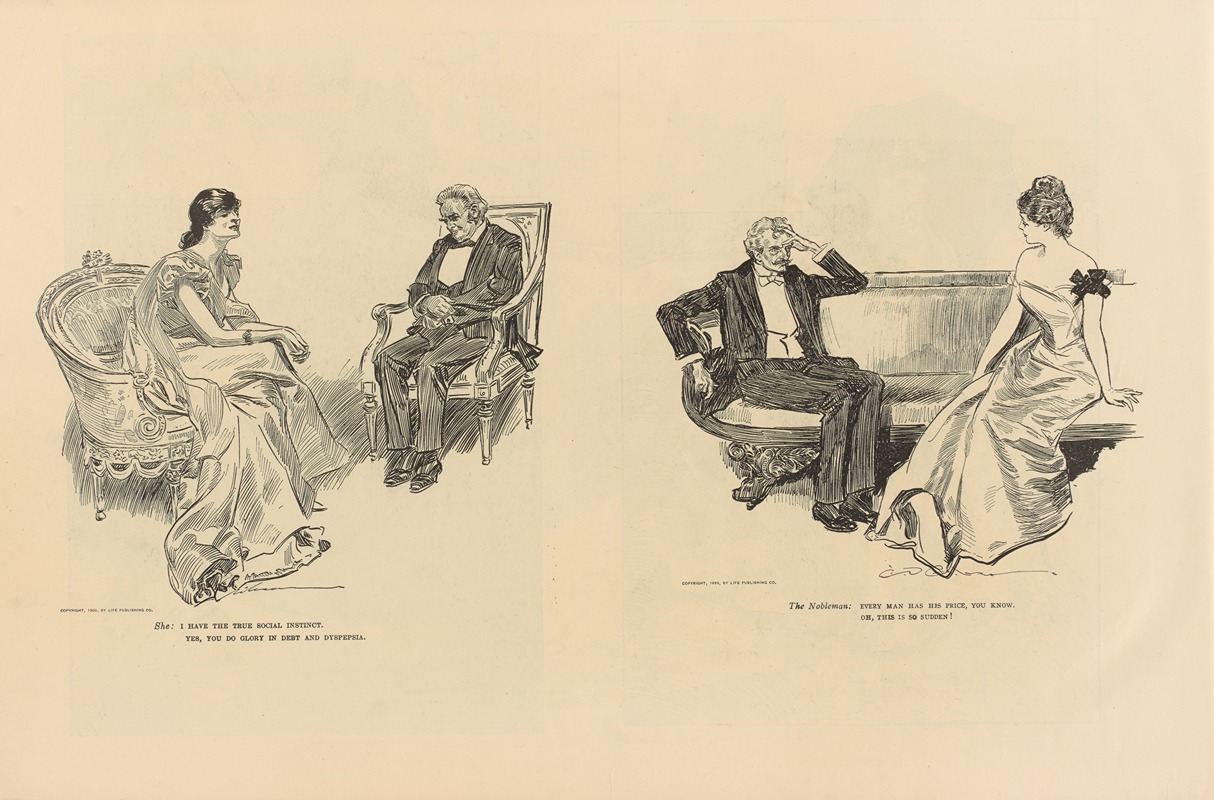
She; I have the true social instinct
A hand-painted replica of Charles Dana Gibson’s masterpiece She; I have the true social instinct, meticulously crafted by professional artists to capture the true essence of the original. Each piece is created with museum-quality canvas and rare mineral pigments, carefully painted by experienced artists with delicate brushstrokes and rich, layered colors to perfectly recreate the texture of the original artwork. Unlike machine-printed reproductions, this hand-painted version brings the painting to life, infused with the artist’s emotions and skill in every stroke. Whether for personal collection or home decoration, it instantly elevates the artistic atmosphere of any space.
Charles Dana Gibson was an influential American illustrator, best known for creating the iconic "Gibson Girl," a representation of the idealized American woman at the turn of the 20th century. His work captured the spirit and social dynamics of his time, often with a touch of humor and satire. One of his notable illustrations is "She; I have the true social instinct," which exemplifies his keen observation of social interactions and gender roles during the late 19th and early 20th centuries.
The illustration "She; I have the true social instinct" was published in the early 1900s, a period when Gibson's work was widely circulated in popular magazines such as Life, Harper's Weekly, and Scribner's. These publications helped disseminate his illustrations to a broad audience, cementing his status as a prominent figure in American art and culture. The "Gibson Girl" became a cultural phenomenon, symbolizing the independent and modern woman, characterized by her poise, beauty, and confidence.
In "She; I have the true social instinct," Gibson employs his signature pen-and-ink style to depict a scene that reflects the social mores and expectations of the era. The illustration typically features a young woman, embodying the "Gibson Girl" archetype, engaged in a social setting. The title suggests a commentary on the woman's innate ability to navigate social situations, a skill highly valued in the social circles of the time. This ability was often associated with charm, wit, and an understanding of social etiquette, qualities that were essential for women who aspired to maintain their status in society.
Gibson's work often highlighted the contrasts and contradictions in the roles of men and women. Through his illustrations, he explored themes such as courtship, marriage, and the evolving roles of women in society. "She; I have the true social instinct" can be seen as a reflection of these themes, capturing the nuances of social interaction and the expectations placed on women to be socially adept and engaging.
The popularity of Gibson's illustrations, including "She; I have the true social instinct," contributed to the broader cultural dialogue about gender roles and the changing status of women during the Progressive Era. The "Gibson Girl" became a symbol of the new woman—educated, independent, and socially aware—challenging traditional notions of femininity and paving the way for future generations.
Gibson's influence extended beyond illustration; his work inspired fashion, literature, and even theater. The "Gibson Girl" look, characterized by an hourglass figure, upswept hair, and elegant attire, became a fashion trend, influencing women's clothing and hairstyles. This cultural impact underscores the significance of Gibson's work in shaping the perceptions of women and their roles in society during a transformative period in American history.
In summary, "She; I have the true social instinct" is a testament to Charles Dana Gibson's ability to capture the essence of his time through art. His illustrations not only entertained but also provoked thought and discussion about the social dynamics and gender roles of the early 20th century, leaving a lasting legacy in American art and culture.





